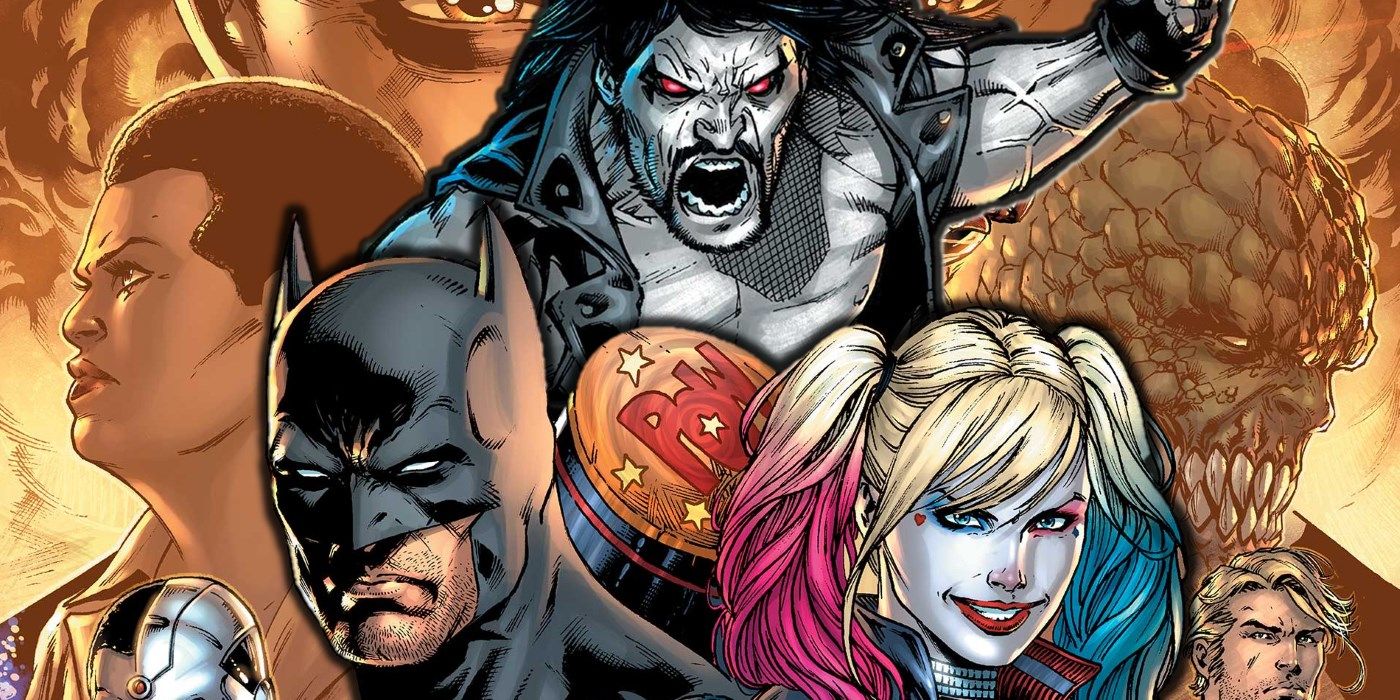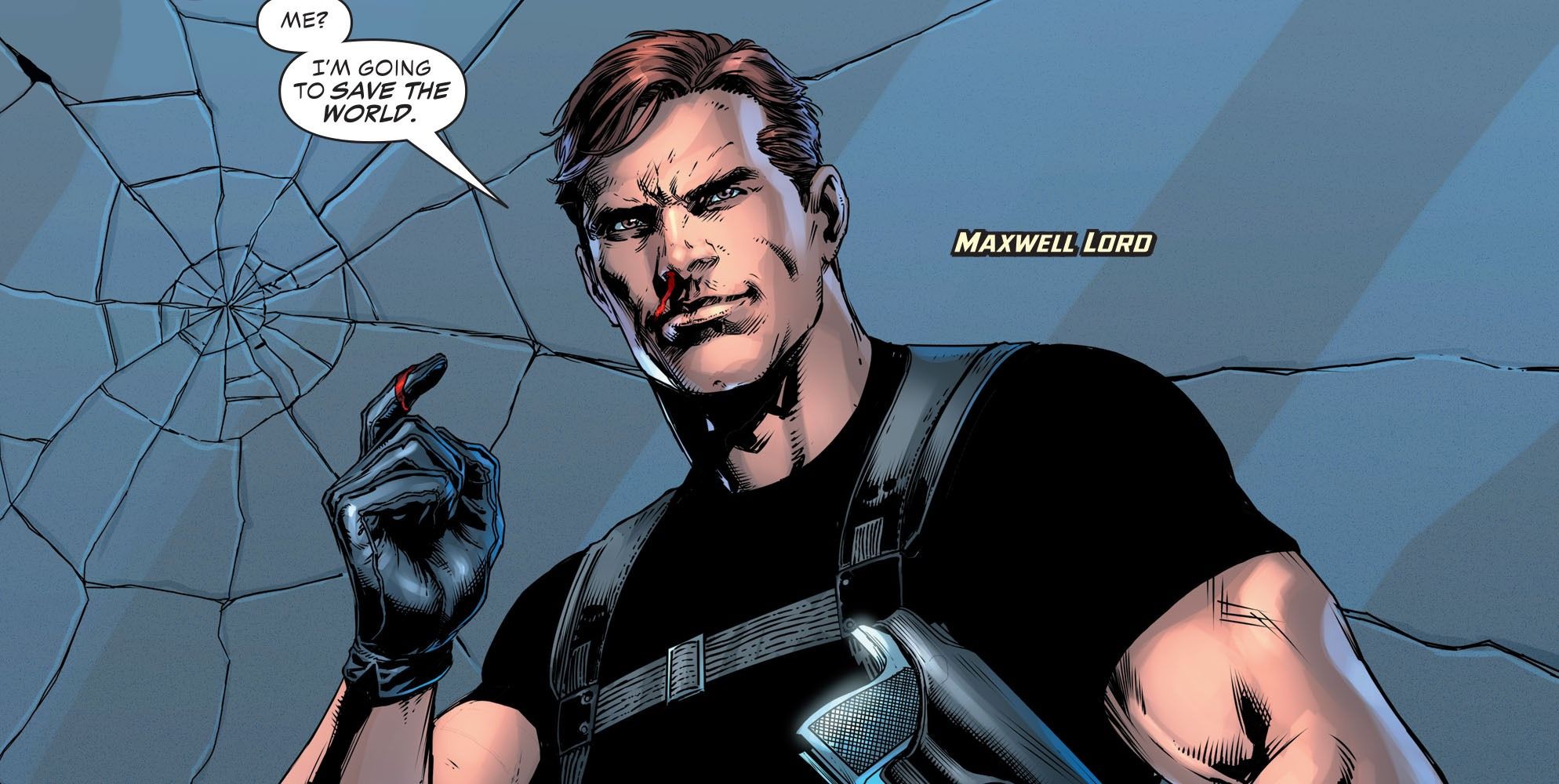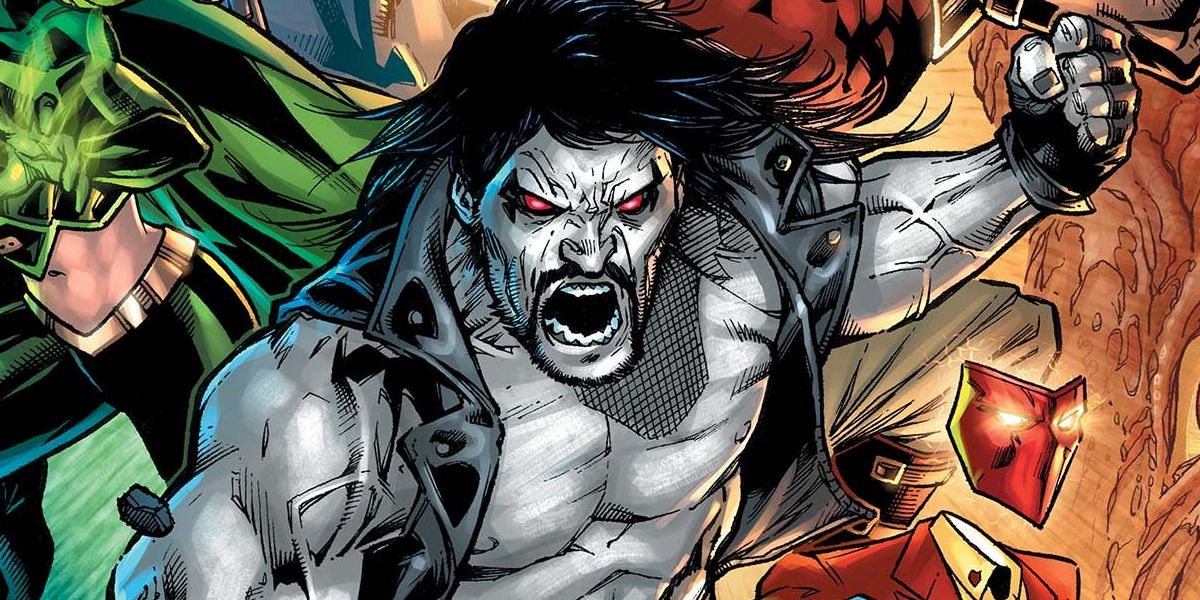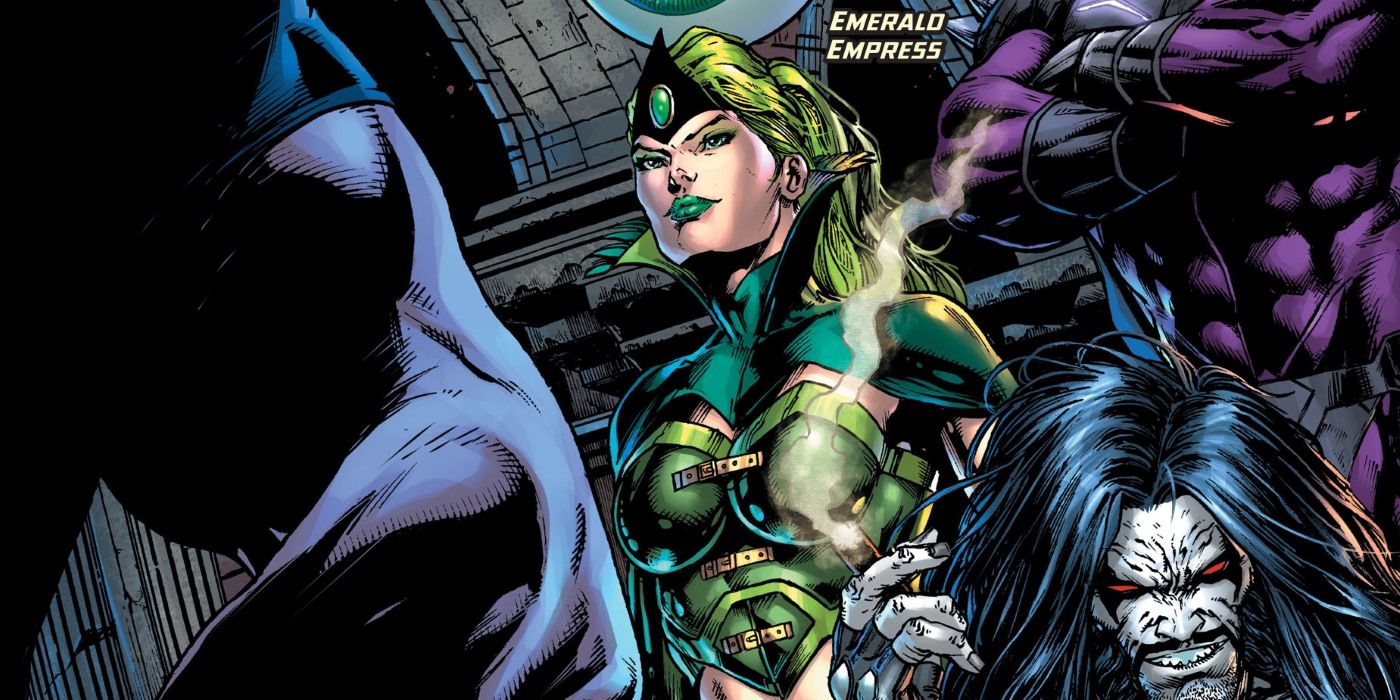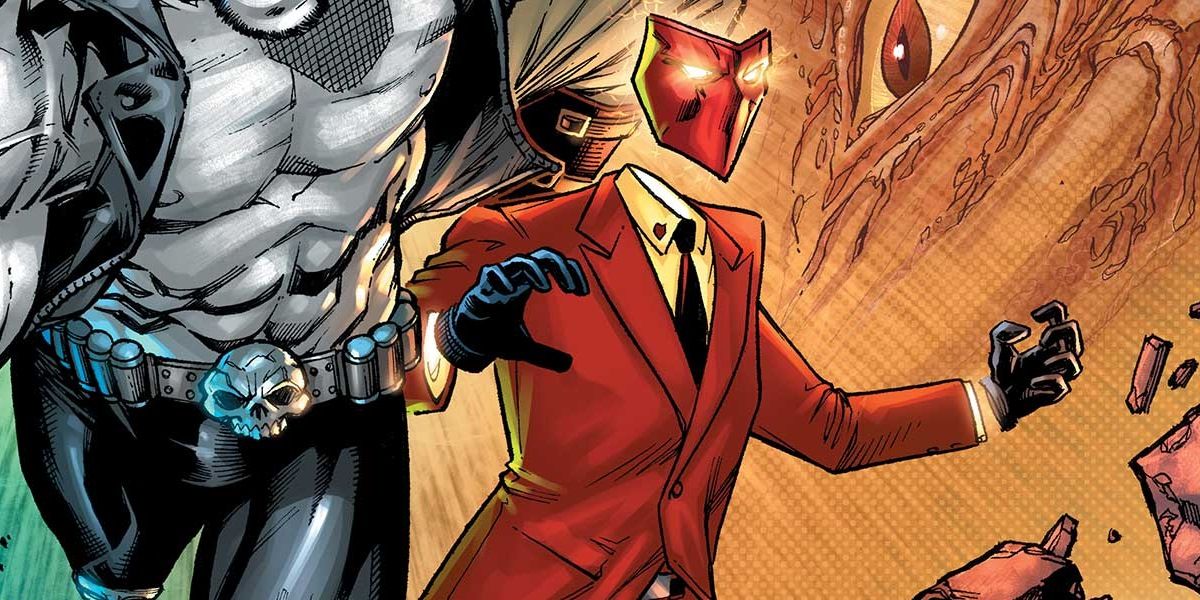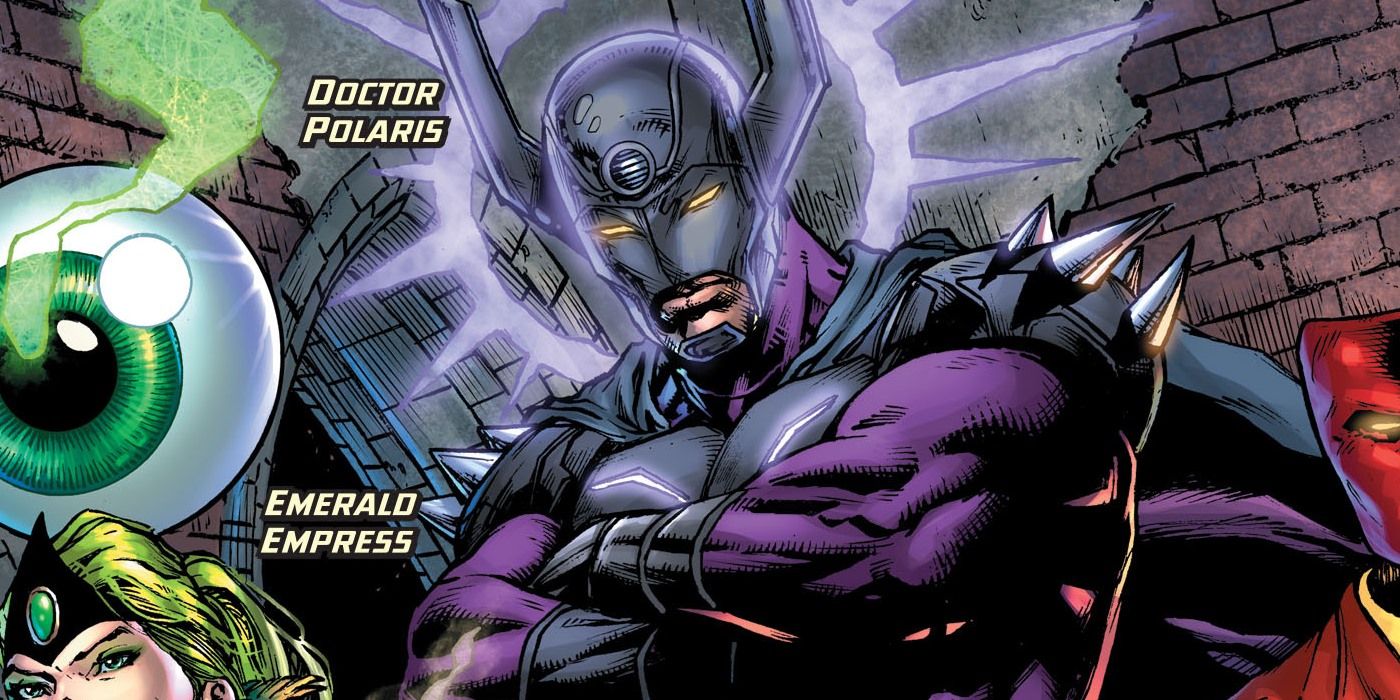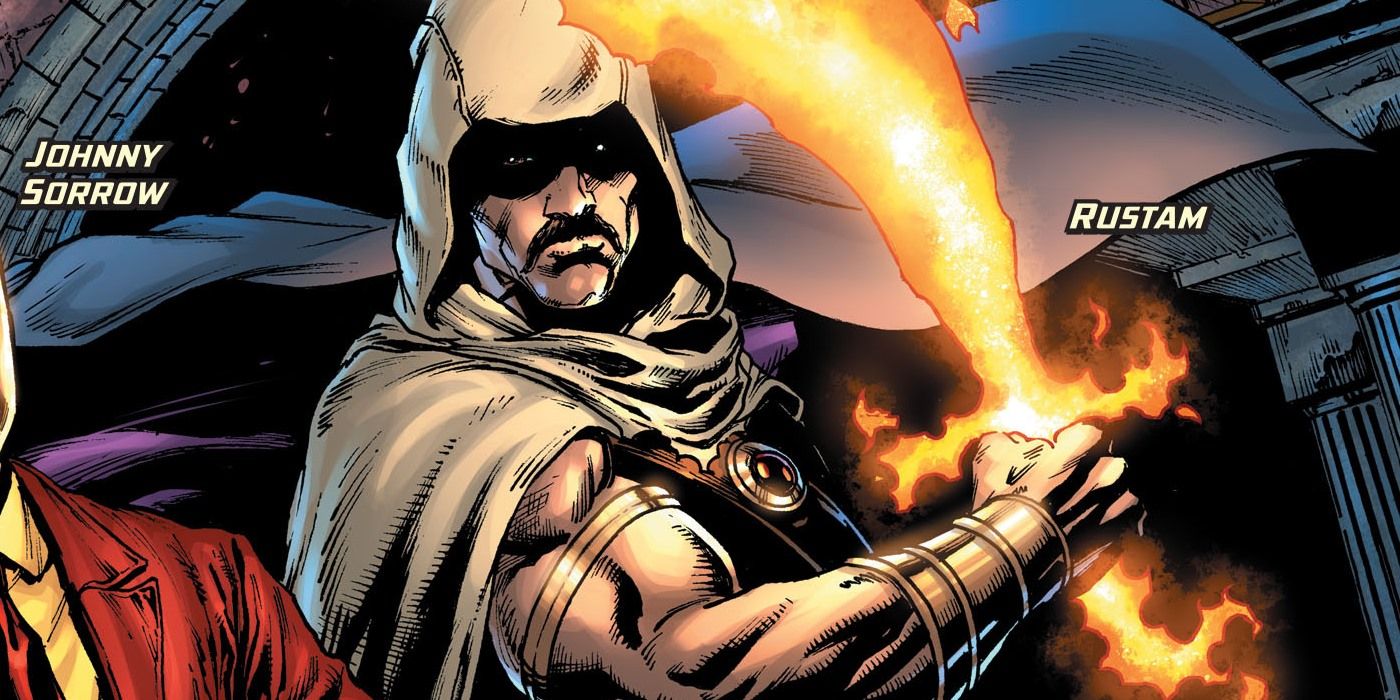NOTE: This article contains SPOILERS for "Justice League vs. Suicide Squad" #1
-
When you've got a success on your hands, there's no better time to double down on the excitement - and for DC Comics, that means following up their smash hit "Rebirth" by combining two of their best known super-teams. Fans didn't need anything more than the title to get excited for "Justice League vs. Suicide Squad" but with Josh Williamson at the helm and artist Jason Fabok on the first issue, the first chapter hasn't disappointed... but it has surprised.
You might think that combining the talents of Batman, Superman, Wonder Woman, Harley Quinn, Deadshot and Killer Croc in one book would be enough, but the first major "Rebirth" event demands something special. That something special is the surprise reveal that the Squad won't actually be playing the villains of the series at all: that task falls to a returning villain gathering a new team of baddies with world domination in their sights.
The title teams will pull all kinds of readers in for the debut issue, which means plenty will be left confused, confounded, or simply uncertain about what to take away from the issue's final pages. With that in mind, we're breaking down the reveals, with some added details on why these villains were plucked from the DC canon.
Maxwell Lord
In the great pantheon of annoying villains that just never seem to die, Maxwell Lord has risen to the top of the class in recent years. Originally introduced as the man who (under duress) formed the Justice League, Maxwell Lord would go on to become a ruthless businessman, before being killed, resurrected as an evil cyborg, and eventually introduced as a primary antagonist in the lead-up to DC's "Infinite Crisis." In short, he's a middle-aged American military/government thinker with delusions of grandeur... who can also control minds.
The gift of mental domination was given as a result of DC's "Invasion!" event (the same one recently adapted to The CW's universe), and takes the spotlight in "Justice League vs. Suicide Squad" #1. Using the ability to turn armed guards against eachother, Lord strolls into The Catacombs, a top secret prison facility in Death Valley constructed to contain a select few super criminals. Criminals who, aside from being blessed with devastatingly deadly powers, all share the same quality of most value to Lord's mission: they all hate Amanda Waller.
If it wasn't clear already, we can confirm that he's no ordinary villain. And as Josh Williamson explains to Comicosity, being brought face to face with Amanda Waller is where his own journey really takes shape:
"A lot of Rebirth is about hope, right? And I think Max believes that. He believes in hope and inspiration. Whereas in the beginning of Rob Williams’ Suicide Squad, you get this scene with Waller that shows she’s really content with what she’s doing and why she’s doing it. There’s a confidence there. But with Max, it’s bravado, and that raises a level of doubt. One of my favorite scenes in this entire series is Max and Amanda talking one-on-one about some of these ideas, and how, in Max’s mind, he feels they have a lot in common. That they should be getting along and seeing eye-to-eye. But as we explore, you’ll see there are differences."
How Max plans to "save the world" is still a bit of a mystery, as is his vague reference to what could be the changes brought about in DC's New 52 Universe.
Lobo
That's right, the unkillable Czarnian space biker created as a combination of Wolverine and The Punisher in the 1990s has also made the shortlist - oh, who are we kidding: he's the real star of this new villain line-up. Unsurprisingly, he's also the first member of the team to actually speak to their apparent leader, asking the same question as most of the readers: what's in this scheme for Maxwell Lord? We doubt that any answer would sway Lobo one way or another, and Lord's claim to save the world isn't going to be striking any emotional chords. But as Williamson explained to Newsarama, the presence of Lobo is the start of something much bigger - and yes, he WILL be sticking around on the new Justice League of America that is formed in the event's wake:
"I liked Lobo a lot as a kid, and it took me a minute to get back into his head a little bit. I wanted to get Lobo right. That was one of the great things about this project - we worked so far ahead that as I went through the series, I figured him out even better, and I was able to go back to earlier issues to tweak things, to make it more in line with what he should be.
"Absolutely one of my favorite moments in the entire book happens because of Lobo - it was something I wasn't sure if DC was going to let me do. I had an idea, and I remember thinking, "Oh, man, please let me do it." And they let me do it! And I'm really excited to see what people think when we get to that part of the story."
Since the popularity of Lobo is strong enough to survive even the highly contentious New 52 re-imagining, we doubt that fans will need anything more than a glance at Lobo's classic look - and a promise of returning to his unsavory roots - to get back on board. And with Batman leading the Justice League, Harley Quinn and the Squad, and now a band of second and third-tier villains led by Lobo... this event is getting more and more interesting by the issue.
Emerald Empress
While most DC fans will know Lobo and Lord, there is a VERY good chance that the Emerald Empress has yet to appear on their radar. It's one of a few deep nods to fans that Williamson has included in the group, and the Empress' history goes all the way back to the 1960s, introduced as a villain of the future Legion of Super-Heroes. The Empress actually lasted longer than the rest of her team of supervillains, the Fatal Five, and has since gone through multiple reboots and re-imaginings - all clad in emerald, and all tethered to the mystical 'Eye of Ekron.'
Having been a future-dwelling alien, a desperate mistress, and even a Legionnaire herself, the actual nature of the giant floating eye the one called Emerald Empress she takes with her has changed just as often.A mystical artifact, or a disemboided eye of a massive Green Lantern, there's no way to know what Williamson will be carrying forward or reinventing this time around. What we do know is that Jason Fabok had an interesting challenge in designing her look for this event... since the Suicide Squad already has a similar member:
"She’s had a whole bunch of different looks in the past, and we wanted something that distinguished her a little bit from Enchantress. We wanted them not to look exactly the same, although they have similarities in their looks. I think that’s the one we changed the most out of all of the characters. Just trying to give her a more updated look."
The new design is definitely breaking ground for the villainess, and as the cleanest slate of the group, that's a good place to start. Judging by the green blasts of energy that freed the group from their Death Valley prison, we'd say the Eye is working just fine, too.
Johnny Sorrow
It just wouldn't be a DC crossover without a few characters who may lack headline roles, but are nevertheless unforgettable fan-favorites. In "Justice League vs. Suicide Squad," fans have a few such villains, but Johnny Sorrow is in a class all his own. Introduced in the 1990s, Johnny's backstory eventually revealed him to be a star of the silent film age, pushed out of business and into crime by the arrival of "talking pictures." When he added a teleportation device to his repertoire, and a hero caused it to glitch out during a fight, Johnny's form was torn apart and scattered into unknown dimensions.
Eventually, he came into contact with a supernatural entity that needed to escape - in exchange, Johnny was awarded a golden mask to help him contain his essence back in human form. The result was an intangible man in a signature suit, possessing the skills of teleporation, levitation, and energy manipulation. Oh, and the fact that exposing his true face will instantly kill just about anyone made him a no-brainer choice for Williamson:
"When we sat down to talk about these villains, it was like a day-long conversation of who they all were and what each one represented. Johnny Sorrow was the first we picked. It was the first we all agreed on and said, “We have to have Johnny Sorrow.” Part of that is because of Johnny Sorrow’s history and who his heroes are. Part of it was that we all wanted to have a powerful character in there that could be a little scary.
"For me, I always like characters that can be over-dramatic, and Johnny Sorrow was an actor. I like the idea of this character as seeing the world as his stage. He gets to go out there and be this showman. Some of this book that really strikes me is that Johnny Sorrow is out there and these are his enemies he’s fighting, but they’re also his audience. He gets to show off and be this showman who can perform for everyone. That led to a lot of fun stuff for him."
The description of the villain alone should get new fans interested, and it also begs the question: which of the other two teams may fall to Sorrow's true face? Our money is always on Boomerang.
Doctor Polaris
What do you get when you cross a dark personality disorder with a purple costume and supervillain moniker? In the case of Neal Emerson, you get 'Doctor Polaris,' the brilliant researcher of the benefits of magnetism driven to megalomania and supervillainy by a seriously traumatic youth. The villain has been around for decades in mostly minor roles, hassling Green Lantern and The Ray with various magnetism-themed schemes. It's no surprise, then, that the reason for Williamson including him sounds entirely personal:
For me, I fell in love with Doctor Polaris when he was a Ray bad guy back in the '90s Ray series. So for me, when he came up, I was like, 'Yes! Doctor Polaris! We'll do Doctor Polaris!'"
His flamboyant name and costume aside, Doctor Polaris' powers are no joke. We don't yet know just how his magnetism will be put to use for Maxwell Lord's goals, but the prison breakout alone shows metal cables being used to bind and kill. And, lest we forget, a villain capable of controlling metal could render a shooter like Deadshot next to useless in a fight.
Rustam
With the overall message of the team being "what's old is new again," Williamson made sure to include a throwback all the way to the very debut of John Ostrander's "Suicide Squad" (1987). He may not have been the most memorable member of the Jihad terrorist group, but his power was hard to forget. The ability to conjure a scimitar of flame from nothing meant he was a unique threat, and it's one that the new version of the Squad will have to tackle (not to mention the possibilities opened up by reuniting characters who first met thirty years ago - but may not remember it...).
Fabok made sure to give a bit of an upgrade to Rustam's costume, apparently injecting more of an "Assassin's Creed" vibe to the aesthetic. It's hard to argue with the results, since Williamson confirms that the move was distinctly one of nostalgia, and making sure that a Suicide Squad-level event hearkened back to the team's beginnings:
"Every character we picked, we picked for a reason. It was us sitting down for a day-long conversation making sure that we had the right team. Rustam kept coming up in these conversations. All of us working on this book are huge Ostrander-McDonnell Suicide Squad fans. And in having these conversations about who were going to be the villains, we all really felt like there needed to be a classic Suicide Squad villain. Someone who represented that idea. Because really, each one of these villains represents a different part of the DCU, whether you see it or not. Some are more obvious than others.
"You’ll see throughout the series what Rustam’s motivation is, but I think it’s too big of a spoiler for the book to get into now. He has a very interesting perspective and he’s going to be a big character moving forward. We really wanted to reinvigorate him for this new universe. We all like him, and felt like he has a unique perspective."
While we would have expected a cameo for Rustam, the tease of him playing a "big" role going forward will pique the curiosity of even unfamiliar DC fans. Combine that quote with the comments around Lobo, and it seems "Justice League vs. Suicide Squad" may be a book even casual fans will want to read - or wind up picking up later to see how changes to the DC Universe actually came about. And in the end, what more can you ask for from a comic book crossover event?
NEXT: Even Superman Can't Beat DC's New Deathstroke
Justice League vs. Suicide Squad #1 is available now.
Source: Newsarama, Comicosity

